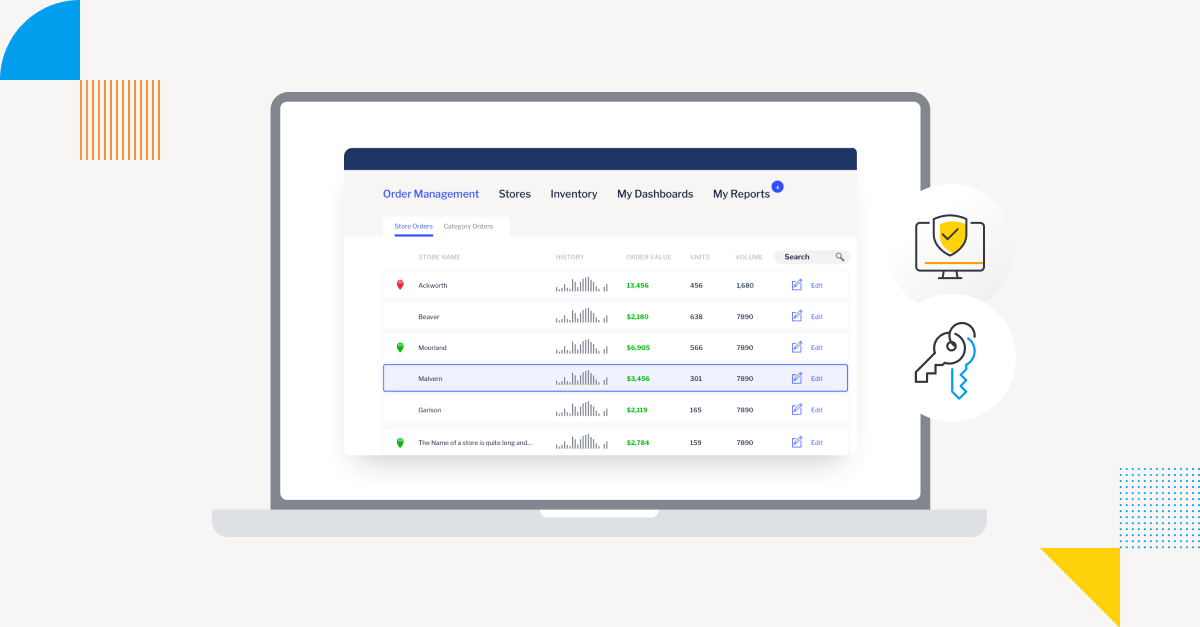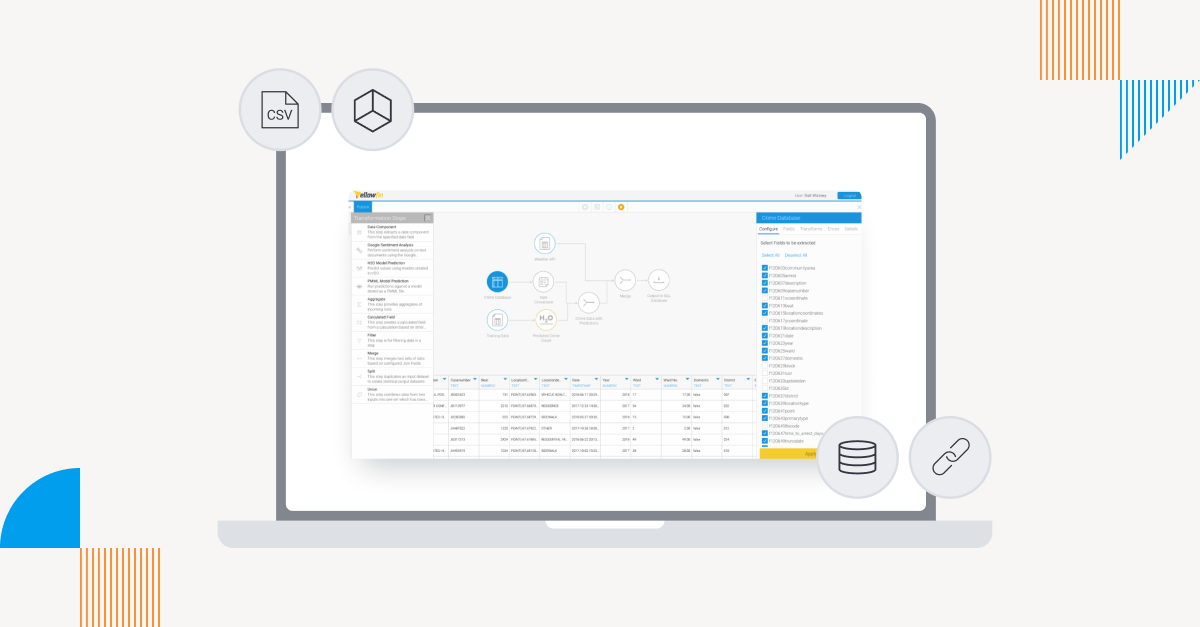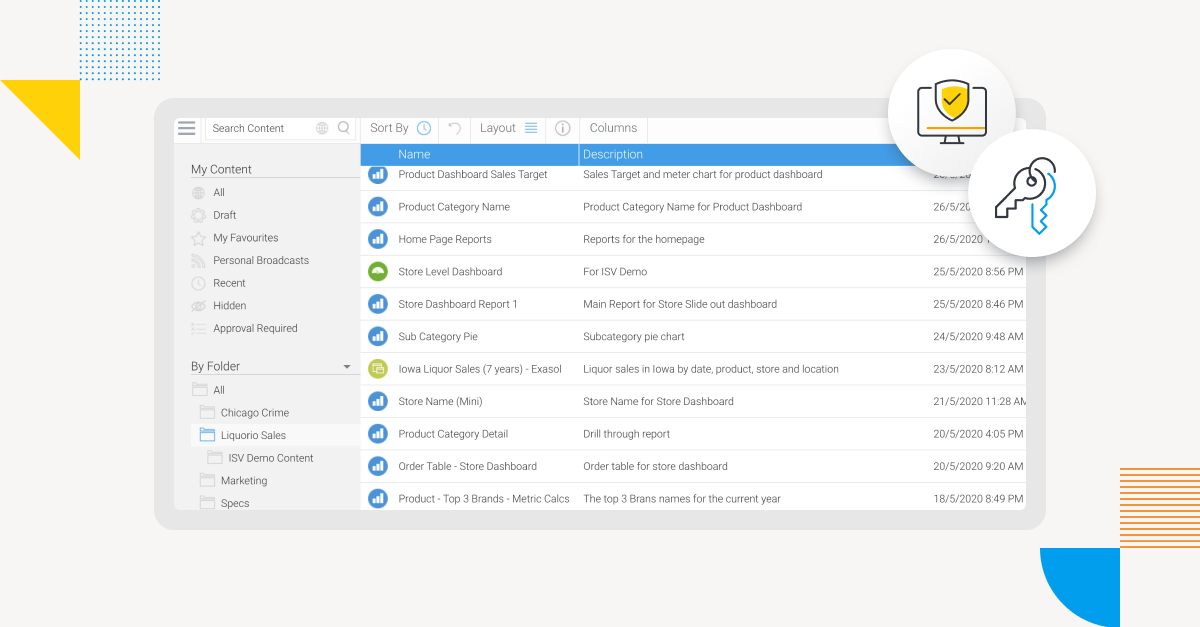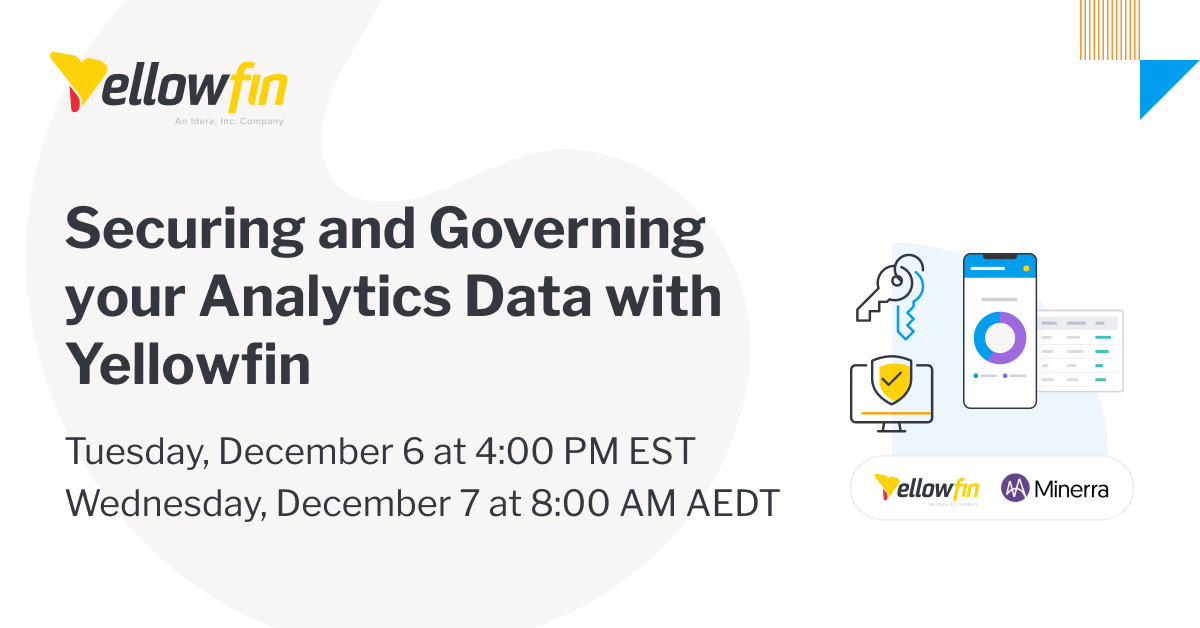
What is Data Governance? Accountability and Quality Control in Analytics
Effective control and governance over your data assets is vital for long-term business success. By keeping your data available, reliable and usable for analysis, consumption and sharing, you can ensure data quality, data security and data reliability is consistently met.
However, many organizations today struggle to implement governance frameworks over their data, which has once again highlighted the importance of data governance.
So, what is data governance? Is it the same as data security, or something different?
In this blog, we explain what data governance is in detail, to help you understand its purpose, benefits, and how analytics solutions help implement governance in practice.
What is the meaning of data governance?
Data governance is the formal policies, processes and tools that help modern businesses ensure the availability, integrity and usability of data assets throughout the entire data lifecycle ( connect, prepare, build, analyze and collaborate).
While closely linked with data security and data privacy, data governance is its own distinct practice centered on standardizing data quality - and ownership over it.
Businesses with data governance frameworks typically have systematic guidelines established on how to structure data, so that proper accountability around the quality of said data, as well as necessary regulatory standards (which may differ by region) are met.

A fully implemented data governance framework can help small and large organizations:
- Connect all their data in a centralized platform securely
- Easily identify the original source of data and prepare it for analysis
- Leverage data as an enterprise asset in their reporting
- Transform raw data into valuable insights
- Understand data better so that it is reliable to use for decision-making
Today, analytics and business intelligence (BI) solutions are designed to help implement your framework by providing all the tools to control, manage and track data - which makes it more important than ever to choose a BI vendor that supports governance.
What does data governance look like?
How data governance guidelines and frameworks are established varies between businesses, and how these processes are ultimately implemented depends on the analytics solution chosen.
A data governance framework lays out the policies, standards and quality KPIs that are required, by the business, from their data. This typically includes the rules that must be adhered to, the quality control measures that underpin them, and the organizational structure (a dedicated committee within the business and established roles and permissions, such as data stewards and data owners) that ensure ongoing, consistent management of this overarching framework.
Typically, most businesses select a BI vendor with data governance and control tools to help establish this framework into practice, and ensure the high quality and availability of their data in one centralized platform. Implementing governance here helps improve the overall privacy and security of data assets, both when used internally and externally. Analytics platforms with comprehensive data governance capabilities typically offer tools that cover the following areas:
Administration console: This allows admins to to view, manage and search system-wide configurations, such as data sources, users (groups and roles) and metadata layers, in a centralized place to track data usage, optimize the BI environment and manage deployment.
Content organization: Analytics platforms that facilitate governance management offer ways to ensure content (reports, dashboards, data visualizations, etc) always make it to the right people, such as Yellowfin’s Content Folders system. Content organization capability allows for the delineation of content by business unit (marketing, sales, finance, etc) or experience (day-to-day, broad organizational reports, C-suite, etc).
Data lineage: This allows organizations to easily define the data flow path and track the origin, relationships and dependencies of their data sources and assets for better clarity, confirmation and confidence in the trustworthiness of the data they eventually use for decision-making.
Data ownership: BI tools with data governance support always allow for easy assignment of data assets to specific owners, stakeholders and users, to establish clear accountability over which groups or individuals have authorized access to certain business information. For instance, you can ensure only certain users are given access to a particular data set or embedded content, which is specific to their organization and persona which you pre-configure. Ownership tools in analytics platforms typically also enable admins to manage queries or issues that may arise pertaining to data.
Data preparation: Analytics platforms with a data preparation module such as Yellowfin enables users and admins to easily model, profile, clean, shape, enrich, publish and secure trusted data. If you want to prove your users self-service analytics, you need a data preparation capability to build a meta-data layer, which acts like a business translation layer (project, workbook, etc) that makes it easy to create new content from it in a governed and secure way.

The main challenges of data control today
Businesses that lack a comprehensive solution that can help instate data governance processes often face disconnected uses of data and analytics that only focus on local business area needs.
When left unchecked, this causes siloed data, wasted resources and questionable data.
Many enterprise companies that struggle with forming effective data governance guidelines often lack communication between data and analytics leaders and other business units, leading to decentralized data and a lack of standardized approach to governance across the organization.
According to a Gartner survey, the absence of a unified approach to data governance is the main barrier to achieving governance objectives today, with other factors also contributing, including:
- Lack of commitment or support from leadership teams
- Lack of education and training on the importance of data governance
- Lack of the right technology for data governance
This is why many organizations looking to adopt an analytics platform today also look for an end-to-end analytics solution that can help them establish and unify their desired governance framework for better, more consistent control over their data.
Why is data governance important?
Data governance helps businesses combat common issues such as data silos (where data is compartmentalized or otherwise hard to access), threats to data privacy and security, and unclear ownership over data through clear and consistent cataloging, cleaning and tracking.
The fact is digital enterprise environments are complex and always increasing in quantity of incoming data. There is a lot of potential to find valuable insights here, but without a systematic framework in place (data governance), there will be no accountability, communication or support to actually begin leveraging that data and ensuring it's reliable.
Data otherwise becomes a wasted resource, or an expensive liability that goes unused.
Where do I start with data governance for my business?
It’s clear that data governance is an important necessity for maintaining data quality as well as business-wide accountability over who can access data, how they access it, and where that data comes from (data lineage).
To be able to begin enforcing governed data discovery best practices in your organization, you must first spend time familiarizing yourself with analytics solutions that provide tools that specifically empower you to put your governance framework into practice. But not all BI vendors are equal in capability.
Yellowfin has a multitude of capabilities unique to the platform that help enforce data governance., including Access Filters, Content Folders, dashboard embedding, Linked Filters, multi-tenancy, view Security and more, which you learn about in our on-demand webinar - Securing and Governing your Analytics Data with Yellowfin.
Watch: Data Governance with Yellowfin BI
Discover Yellowfin's comprehensive data governance suite, including its robust content organization, meta-data layer, multi-tenancy, and security capabilities in our on-demand webinar.

